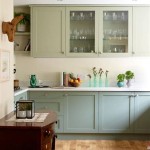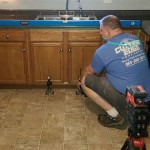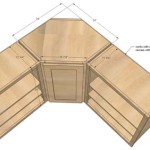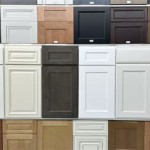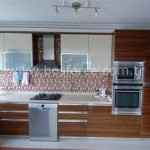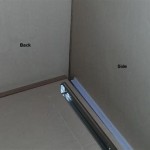How Much Do Kitchen Cabinets Cost To Install?
The kitchen is often considered the heart of the home, and kitchen cabinets play a pivotal role in both its functionality and aesthetic appeal. When undertaking a kitchen remodel or simply upgrading existing cabinetry, understanding the costs involved in installation is crucial for effective budgeting and project planning. Cabinet installation costs can vary significantly based on numerous factors, encompassing the type of cabinets, the complexity of the installation, geographic location, and labor rates. This article provides a comprehensive overview of the key aspects influencing the price of kitchen cabinet installation.
The overall cost of installing kitchen cabinets is typically broken down into two primary components: the cost of the cabinets themselves and the cost of labor for installation. Cabinet prices can range widely, from budget-friendly stock options to custom-designed, high-end cabinetry. Labor costs, likewise, are subject to variation depending on the scope of the project and the expertise required for a professional and successful installation.
Before delving into the specific cost ranges, it is important to differentiate between the types of cabinets available. The most common types are stock, semi-custom, and custom cabinets. Stock cabinets are pre-made in standard sizes and styles, offering the most affordable option and quickest turnaround time. Semi-custom cabinets offer more flexibility with modifications to standard sizes and finishes, allowing for a degree of personalization. Custom cabinets are built to precise specifications, providing the greatest design freedom and highest level of quality, often at a premium price.
With these preliminary considerations in mind, let's now explore the key factors that influence the total cost of kitchen cabinet installation.
Key Point 1: Cabinet Material and Type
The material and type of cabinets chosen constitute a significant portion of the overall project cost. Stock cabinets, typically made from particleboard or MDF (medium-density fiberboard) with a laminate or veneer finish, are the most cost-effective. These cabinets can range from $70 to $200 per linear foot, depending on the style and hardware.
Semi-custom cabinets provide a balance between affordability and customization options. They are often made from higher-quality materials, such as plywood or solid wood frames, with various door styles and finish options. The cost for semi-custom cabinets can range from $150 to $650 per linear foot.
Custom cabinets, crafted from solid wood or high-end plywood, offer unparalleled design flexibility and quality. These cabinets are meticulously tailored to the homeowner's specific needs and preferences, resulting in a significantly higher price point. Custom cabinets can range from $500 to $1,500 or more per linear foot, depending on the complexity of the design, the type of wood used, and the level of craftsmanship.
Beyond the primary materials, the type of finish applied to the cabinets can also affect the cost. Painted finishes tend to be more expensive than stained finishes, primarily due to the labor and materials involved in achieving a smooth, durable surface. Additionally, specialty finishes, such as glazing or distressing, can add to the overall cost.
Hardware, including knobs, pulls, and hinges, also contributes to the final cost. While seemingly minor, these details can significantly impact the overall aesthetic and functionality of the cabinets. High-end hardware made from materials like stainless steel or brass can add a considerable expense compared to standard hardware.
In summary, the selection of cabinet material, type, finish, and hardware directly influences the overall cost of the project. Homeowners should carefully consider their budget and design preferences when making these choices.
Key Point 2: Labor Costs and Installation Complexity
Labor costs for kitchen cabinet installation are typically calculated on an hourly basis or per linear foot of cabinet installed. The hourly rate for a professional cabinet installer can range from $50 to $150, depending on the region, the installer's experience, and the complexity of the project.
The complexity of the installation plays a crucial role in determining the labor costs. A straightforward installation of stock cabinets in a simple layout will generally be less expensive than a more complex installation involving custom cabinets, intricate layouts, or structural modifications. Factors that can increase the complexity, and therefore the labor costs, include:
- Removing existing cabinets and preparing the space.
- Modifying existing plumbing or electrical systems.
- Installing cabinets around appliances, such as refrigerators and dishwashers.
- Working with non-standard cabinet sizes or configurations.
- Dealing with uneven floors or walls.
- Installing specialized features, such as pull-out shelves or soft-close hinges.
The process of removing existing cabinets can add to the overall installation cost. Depending on the condition of the old cabinets and the method of removal, this task can take several hours or even a full day. If the cabinets are to be disposed of, there may also be additional disposal fees.
Modifications to plumbing or electrical systems are often necessary when installing new cabinets, particularly if the layout of the kitchen is being significantly altered. These modifications can require the services of licensed plumbers and electricians, adding to the overall project cost. The cost of these services can vary depending on the scope of the work and the local rates for these trades.
Uneven floors or walls can also complicate the installation process and increase labor costs. Installers may need to shim or level cabinets to ensure a proper fit and alignment. This can be a time-consuming and labor-intensive task, especially in older homes where the structural integrity may be compromised.
Therefore, it is essential to factor in the complexity of the installation when budgeting for labor costs. Obtaining multiple quotes from qualified installers and discussing the specific challenges of the project can help to provide a more accurate estimate.
Key Point 3: Geographic Location and Market Conditions
The cost of kitchen cabinet installation can vary significantly depending on the geographic location and local market conditions. In regions with a higher cost of living, such as major metropolitan areas, labor rates and material costs tend to be higher. Conversely, in areas with a lower cost of living, the installation costs may be more affordable.
Demand for kitchen remodeling services can also influence pricing. During peak seasons, such as spring and summer, when many homeowners are undertaking home improvement projects, the demand for cabinet installers may increase, leading to higher labor rates. Conversely, during slower periods, installers may be more willing to offer discounts or negotiate prices.
The availability of qualified installers in a particular area can also impact the cost. In areas with a limited number of experienced cabinet installers, the competition for their services may be greater, driving up labor rates. Conversely, in areas with a larger pool of installers, the competition may be lower, resulting in more competitive pricing.
The proximity to suppliers and manufacturers can also affect material costs. Regions with easy access to cabinet suppliers or manufacturers may benefit from lower transportation costs, which can translate to savings for homeowners. Conversely, in areas that are geographically isolated, the transportation costs may be higher, leading to higher material prices.
Local building codes and regulations can also influence the cost of kitchen cabinet installation. Some jurisdictions may require specific permits or inspections for cabinet installations, which can add to the overall project cost. It is important to research the local building codes and regulations before undertaking a kitchen remodeling project to ensure compliance and avoid potential fines or delays.
In conclusion, geographic location and market conditions play a significant role in determining the cost of kitchen cabinet installation. Homeowners should research local labor rates, material prices, and building codes to obtain a realistic estimate for their project.
Beyond these primary factors, other considerations can influence the final cost. These include the size of the kitchen, the number of cabinets being installed, and any additional work required, such as painting, tiling, or flooring. A larger kitchen with more cabinets will naturally require more materials and labor, resulting in a higher overall cost.
It is always advisable to obtain multiple quotes from different contractors before making a decision. Comparing quotes can help homeowners to identify the best value for their money and ensure that they are not overpaying for installation services. It is also important to check the contractor's credentials, insurance, and references before hiring them to ensure that they are qualified and reputable.
Planning and communication are essential for a successful kitchen cabinet installation project. Homeowners should clearly communicate their design preferences, budget constraints, and expectations to the contractor to avoid misunderstandings and ensure that the project is completed to their satisfaction. Regular communication throughout the project can also help to address any issues or concerns that may arise and ensure that the project stays on track.
Proper maintenance of kitchen cabinets is also crucial for extending their lifespan and preserving their aesthetic appeal. Regularly cleaning the cabinets with a mild detergent and water can help to remove dirt and grime and prevent damage to the finish. Avoiding harsh chemicals or abrasive cleaners can also help to protect the cabinet surfaces from scratches or discoloration.
By carefully considering all of the factors discussed in this article, homeowners can make informed decisions about their kitchen cabinet installation project and ensure that they stay within their budget while achieving their desired results. A well-planned and executed kitchen cabinet installation can transform the look and feel of the kitchen, adding value and enjoyment to the home for years to come.

How Much Does It Cost To Install Kitchen Cabinets C4l Cabinetry

Cost To Install Kitchen Cabinets Guide 2024 From Homebuddy

Kitchen Cabinet Installation 2025 Cost Guide

How Much Does It Cost To Install Kitchen Cabinet Singapore

2025 Kitchen Cabinet Installation Cost Guide Modernize

How Much Do Custom Cabinets Cost
How Much Does It Cost To Install Kitchen Cabinets Trendeco

How Much Does It Cost To Install Kitchen Cabinets

How Much Does It Cost To Install Kitchen Cabinets In Kl Malaysia Now Home Factory Renovation Specialist Cabinet Costs 2024 What Pay Semenyih Pj Selangor

Kitchen Installation Cost 2025 Data Angi
Related Posts


